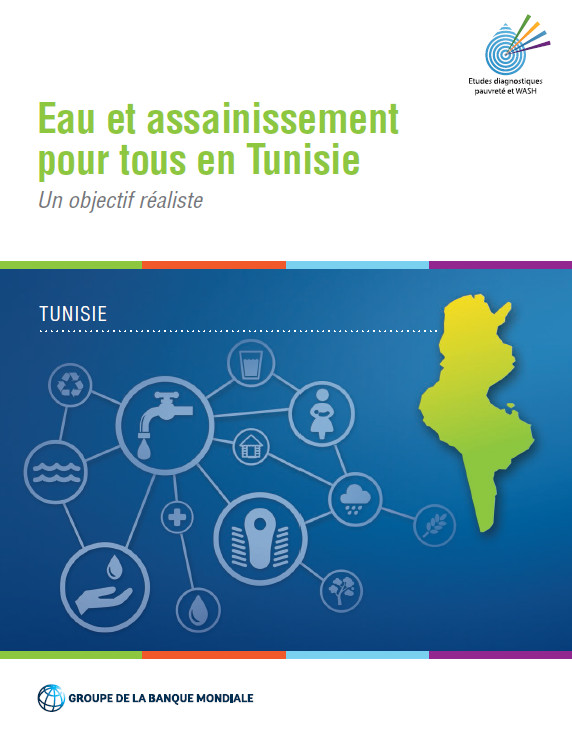Eau et assainissement pour tous en Tunisie : Un objectif réaliste
 |
Water and Sanitation for All in Tunisia A Realistic Objective
rapport Nov 2018 ; 83 pages
Ed. World Bank - Washington
Téléchargeable sous format: PdF
Téléchargeable chez l'éditeur
Page de présentation d'un éditeur
Résumé:
Au cours des dernières décennies, la Tunisie a réalisé des progrès remarquables en matière de réduction de la pauvreté et d’accroissement de l’accès aux services d’approvisionnement en eau, d’assainissement et d’hygiène (WASH).
Si la pauvreté a, d’un point de vue global, reculé en Tunisie au cours des dernières décennies, elle reste inégalement répartie. Selon les estimations récentes du gouvernement, le taux de pauvreté en Tunisie a baissé de 25 pour cent en 2000 à 15 pour cent en 2015, et le nombre de pauvres en 2015 était estimé à 1,7 million.
Recommandations
Recommandation 1 : Mener une planification financière stratégique pour le secteur WASH
Recommandation 2 : Ajuster les tarifs pour se rapprocher des niveaux de recouvrement de coûts tout en préservant l’accessibilité financière
Recommandation 3 : Mobiliser et cibler de manière plus stratégique le financement public du secteur WASH
Recommandation 4 : Définir une stratégie claire pour améliorer l’accès à l’assainissement en milieu rural
Recommandation 5 : Améliorer le suivi du secteur pour mesurer l’avancement vers la réalisation des ODD
Abstract:
In recent decades, Tunisia has made remarkable progress in reducing poverty and increasing access to water supply, sanitation, and hygiene (WASH) services. More than 4 million people in Tunisia have gained access to improved sanitation between 1990 and 2015, and 4 million have gained access to water. This is a significant accomplishment, considering that Tunisia is currently home to 11 million people, 33 percent of whom live in rural areas. Despite this progress, however, around 250,000 people in Tunisia still rely on unimproved drinking water from mostly unprotected wells and springs; of the 900,000 people who use unimproved sanitation, about half use shared latrines, and the other half use mostly unimproved latrines. There are also substantial imbalances in terms of water-resource distribution between the better endowed North and the semi-arid South. If left unaddressed, deficiencies could become more severe in the coming years. Tunisia is a water-scarce country, and water supply security challenges are predicted to be exacerbated by climate change in the coming years. Opportunities for improvement are analyzed and condensed into five clear recommendations for the way forward for the WASH sector in Tunisia.
Mots clefs: |
accès à l'assainissement (CI) (DT) (OP) (ope) , accès à l'eau (CI) (DT) (OP) (ope) , hygiène (CI) (DT) (OP) (ope) |
Pays concerné: |
Editeur/Diffuseur: |
|
World Bank - Washington - Etats Unis |
En cas de lien brisé, nous le mentionner à communication@pseau.org